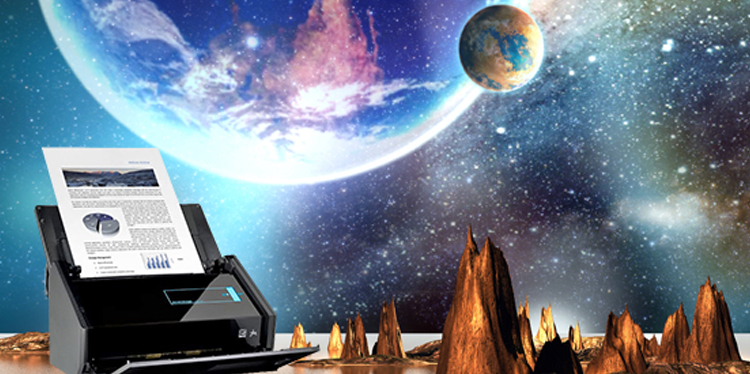From telegraphs that scan signatures to telepaths that scan minds, scanners boast a rich history in the realms of both science and science fiction.
In 1888, an American electrical engineer named Elisha Gray put scribes out of their jobs when he invented the telautograph, the world's first fax machine. Using a telegraph, Gray was able to transmit the movements of a pen from one side of town to another with such accuracy and precision that it was impossible to distinguish between an original autograph and a telautograph. With Gray's invention, one could sign a contract from the other side of the country the very same day that contract was written.
Twenty-five years later, in 1913, a Swiss photographer named Édouard Belin did the same using a telephone and a photocell in a machine he called the Belinograph. However, due to being the Great-War equivalent of AOL dial-up, the Belinograph was short-lived, stepping aside for much faster wire photo services that could send full pages one minute at a time.
As the Second World War approached, a battle of engineers ensued with slight advancements in wire photo technology being made year after year until, in 1948, Western Union won with its compact, desktop-friendly DeskFax.
The first image scanner developed for use with a computer was a drum scanner. It was built in 1957 at the US National Bureau of Standards and the first image scanned on this machine was a 5 cm square photograph of Kirsch's then-three-month-old son, Walden. The black and white image had a resolution of 176 pixels on a side.
With the advent of email and the subsequent ability to send digital images between computers, the need arose for a machine that could not only make and send copies but could turn a full-page document or photograph into a digital file, which could then be sent and either kept or printed.
In 1969, Nobel Prize-winning physicists Willard Boyle and Charles E Smith invented the charge-coupled device, or CCD, a device that converts photons, the light particles that allow us to see physical objects, into electron charges and electron charges into digital values, ones and zeroes, that can then be used to construct a digital copy.
Enter the first digital scanner.
Now in science fiction, ‘scanner' is a pretty commonly used term. It's one of those terms, like ‘antigravity’ or ‘blaster’, that an author can use without any explanation. In 1977, its meaning was sufficiently well established that Philip K. Dick could spin it as wordplay in the title of A Scanner Darkly and the somewhat lesser known 2006 star-studded animated movie version of his book.
In the 1980s, Star Trek became the gold standard in a raft of sci-fi series in which ‘scanner’ was the generic term for all manner of inter-galactic sensory devices. And when writer and director David Cronenberg first conceived of the plot for Scanners, a 1981 science-fiction film in which mind-reading "scanners" can scan for thoughts with such enthusiasm they cause their victims' heads to explode, digital scanning technology was limited to reconnaissance satellites and the world's first digital still camera, which was extremely expensive at the time. Not for another thirty years would people be able to scan things, including other people, as readily as Cronenberg's "scanners" could.
So if you really want to fall down the rabbit hole of biometric scanning in sci-fi movies, here’s a great site to explore. But if you’d prefer to get on board with the commercial scanners of today that companies like Fujitsu are bringing us to digitise, modify, share and store everything from the likes of our family photographs to our tax records, come this way.


